I could have guessed that an olive I took home a few years ago had a trunk that extended below the soil. It was potted in a deep container and was far heavier than I’d expected.
I confirmed this was the case the first time I repotted the tree. There wasn’t much to do about it at the time as the tree had few roots due to poor soil. I put the tree in a deep container and let it grow for another year to give it time to develop better roots.
Here’s what the tree looked like at the end of last year.
Olive – December, 2016
The amount of new foliage suggested the roots had grown well so I decided to see what I could do to get the tree into a shallower pot.
Of course, most of the foliage emerged from beneath the soil. Here’s what it looked like after removing this growth.
After removing shoots that emerged from below the surface of the soil
After minor cutback
I removed the tree from the pot and cleared away most of the soil.
After removing the soil
From the back
In general, olives can withstand a lot of root work. But, like most other varieties, there is a limit to how much can be removed. Because the tree wasn’t very compelling with so much wood below the soil, I opted to make a few large cuts with a reciprocating saw.
Evidence of large cuts
These cuts allowed the tree to fit into a Sara Rayner pot.
After repotting
How did the tree weather the repotting? Have a look.
Eight months later – August, 2017
It’s not nearly as vigorous as it was the year before. No branches were lost, and a few leaves turned yellow, but only a handful of new branches have developed.
This tells me the tree is still working to re-establish a healthy root system. In light of this, the only work for now is to remove the yellow leaves.
After removing yellow leaves
Were the tree growing more vigorously, now would be a good time for wiring and cutback. Instead, I’ll continue to watch the water carefully and let the tree grow through the end of the growing season.
When will it be time to wire the tree? When the tree’s ready. In the meantime, I’ll keep turning it on the bench every few weeks to hone in on the future front.
Right side
Back
Left side
Subscribe to Bonsai Tonight
New Posts Delivered Every Tuesday and Friday
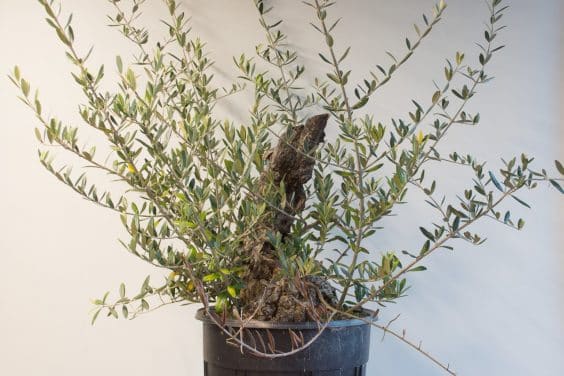
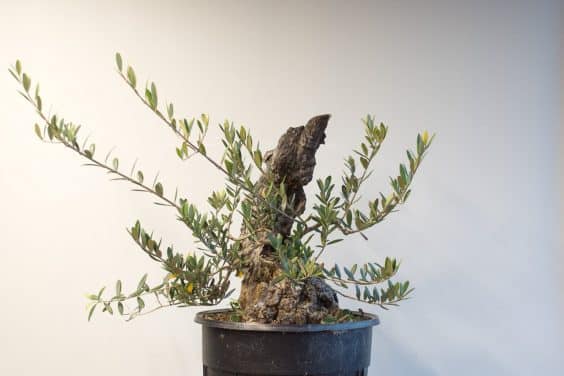
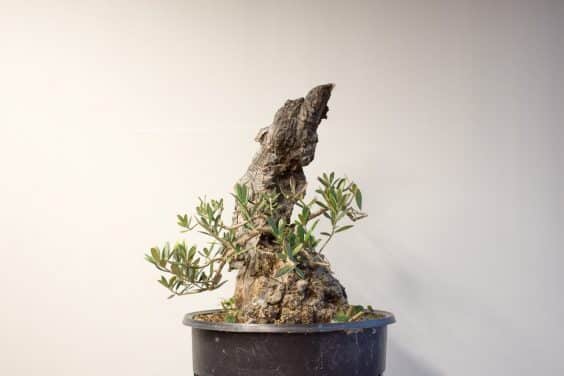
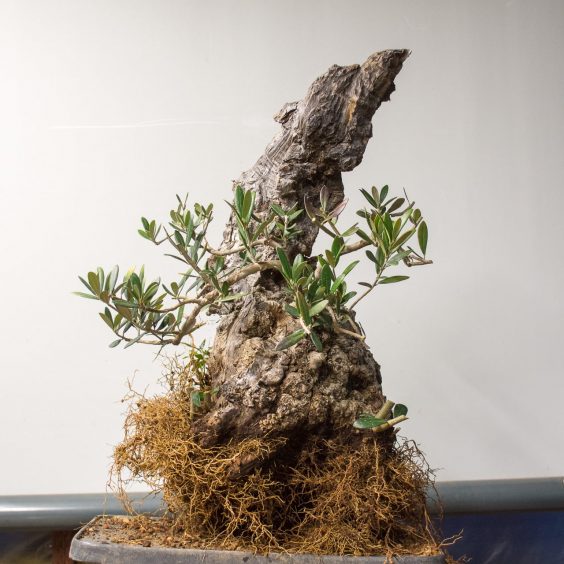
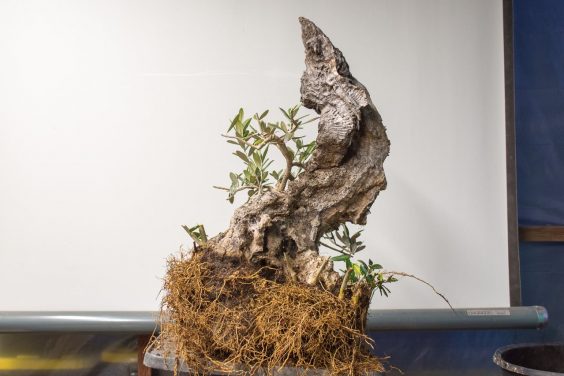
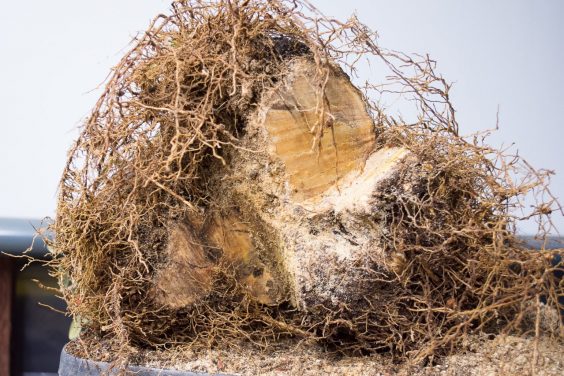
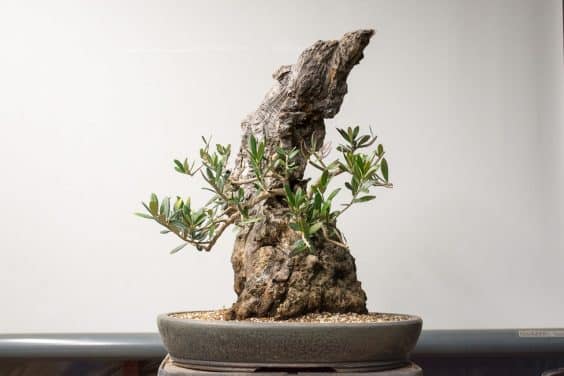
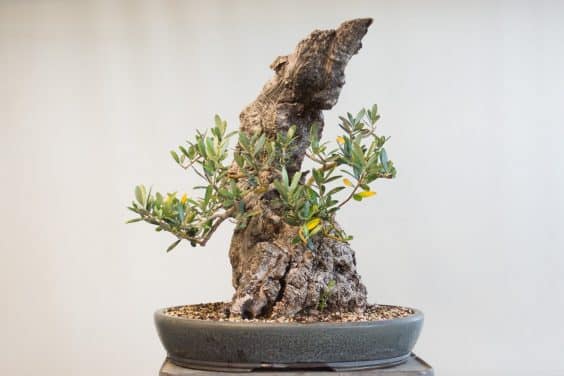
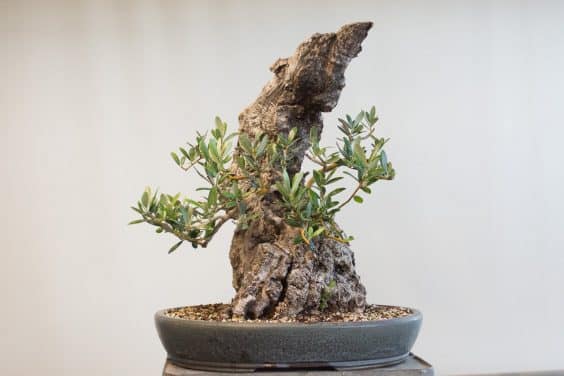
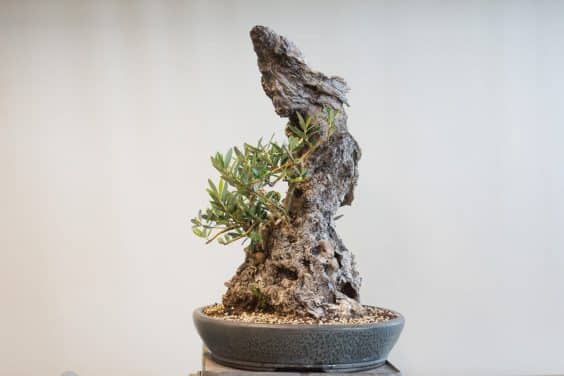
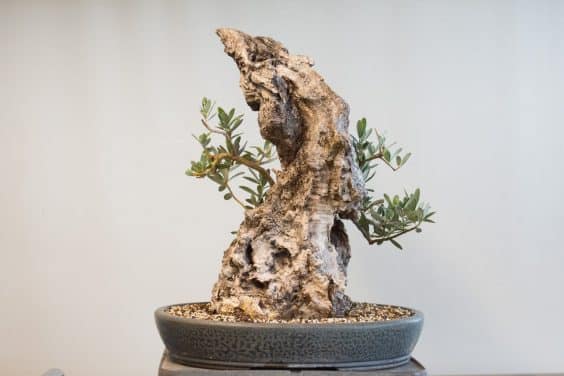
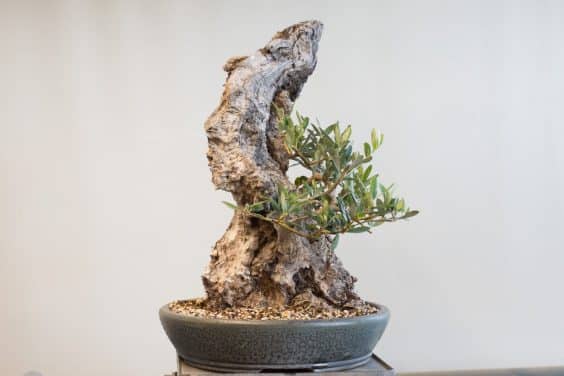
Charles Orr says
Would you consider the left side as a possible new front. It looks even more dynamic.
Jonas Dupuich says
The left and right sides are also options. One reason I selected the current front is that the other sides look like they have been sheared off from the rest of the tree. The only bark is in the front and the lines indicating where the tree was disconnected from the rest of the original tree are less evident here. Will look to post a video at some point to make this more clear.
Thanks for the note Charles!
Louis Dallaire says
Is this the best time to repot in your area ? Why not in spring ?
Jonas Dupuich says
Hi Louis – I repotted this tree in December. The idea is to show that the tree hasn’t grown a lot in the intervening 8 months because the repotting was stressful.
As it happens, healthy olives can be repotted throughout the year where I live as they can recover quickly when they’re actively growing.
Mac McAtee says
I’d go for what you have ID’d as the back. I think the branch attachment being unseen makes one curious and the trunk is the star of the display.
Jonas Dupuich says
Hi Mac – the back is the dramatic option but there’s no live bark at all on this side (hard to tell from the photo). When possible, I like showing signs life from the soil up to the branches.
Janet Nelson says
If you had left those bottom branches long, it may have helped thicken them up faster. Fat lower branches seem to go better with this olive’s massive nebari.
Jonas Dupuich says
Good point Janet – once I get the basic structure set I plan to let those branches run some more.
Adair Martin says
Welcome to the outrageously large Olive club!
That was quite a large root reduction!
Jonas Dupuich says
Awesome! Thanks Adair 🙂
Craig Schwabauer says
Jonas good work on the Olive!! I have a Sara Raynor pot also!! Just have to find the right tree to use in it.
Jonas Dupuich says
Thanks for the note Craig – good luck filling the pot 🙂